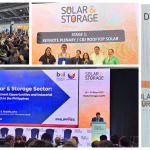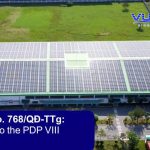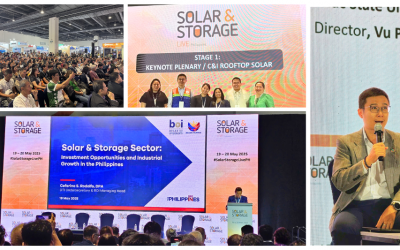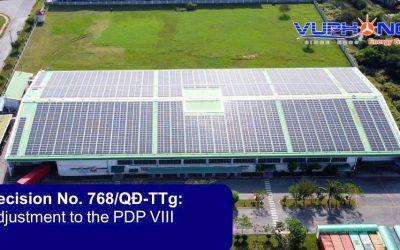
Update 2022: Sunrun made a big impression at the BNEF Summit in New York City, at a time when utilities are trying to adapt to changing conditions.
Sunrun made a big impression at the BNEF Summit
But, distributed energy resources have a long way to go before they can play a significant role, and we will still require other energy sources in future power systems.
There is no other energy conference in the United States that compares to the BNEF Future of Energy (rebranded BNEF Summit in New York) held every year in Midtown Manhattan. Solar Power International attracts more participants, whereas CERAWeek attracts more oil and gas professionals. Here is the place to be for a high-level, imaginative look at where electricity and other types of energy are heading.
 Solar power project 3 MWp, PPA – O&M rooftop solar, Binh Duong
Solar power project 3 MWp, PPA – O&M rooftop solar, Binh Duong
The 2019 conference’s first day did not disappoint. Unlike the previous two years, there were no prominent Trump Administration insiders, such as Myron Ebell or Rick Perry, or Bob Murray, making assertions about how shifting away from coal will cause Grandma to freeze. The presence of some of the brightest brains in the field on energy concerns, including CEOs of some of the world’s top power corporations, was a constant.
And, as in recent years, a reoccurring topic this year is the challenge that utilities and the utility business model confront. The gathering comes as California regulators publicly contemplate dismantling the insolvent Pacific Gas & Electric Company (PG&E), including potential municipal takeovers. In Puerto Rico, the state utility is proposing a new proposal to divide the island’s grid into “mini-grids,” which may not be enough to meet the island’s requirement for constant electricity during catastrophes.
The challenge also comes from distributed solar, batteries, and microgrids, which offer distinct advantages over centralized generation, such as requiring less transmission and distribution infrastructure and providing more stable electricity during disasters.
The dangers of rooftop solar
Sunrun CEO Lynn Jurich joined the utility executives on the plenary stage this year, offering a radically different picture of the future. Jurich observes that an increasing number of the company’s home clients are opting for solar plus battery storage. While the estimate she provided for future levelized power prices from distributed solar and storage – 10 cents per kilowatt-hour within five years – is excessively optimistic, Jurich’s basic rationale is unarguable.
“The cost of delivering that electricity (from centralized generating) is increasing, while the cost of distributed energy resources is decreasing,” Jurich said during a session on generation costs, flexibility, and capacity. “The cost curve will get there. Let’s get there sooner.”
Yet, while the economics point to a future of rooftop solar and battery storage, Jurich stressed that this is part of a wider change. “If we are to genuinely decarbonize, this is a local phenomenon,” Jurich emphasized. “This is how people behave. Local actions will aid in our decarbonization.”
Finally, this is about transforming the built environment. “Solar plus storage is a beachhead inside that house,” Jurich adds, stressing that rooftop solar and batteries may lead to an environment with EV charging, intelligent demand response, and other services.
Which comes first, homes or businesses?
The irony in Sunrun’s argument regarding generating at the point of need is that rooftop and other kinds of on-site solar are far more capable of doing so for offices and factories than for homeowners. Because most Americans work during the day, their rooftop solar is largely fulfilling the need of their neighborhood and/or the companies down the street during the week.
“The economic sense of (deploying solar and batteries) is dependent on high usage rates,” Ralph Izzo, chair, president, and CEO of Public Service Enterprise Group, stated (PSEG). “This benefits clients with a high load factor.”
Despite this, the commercial and industrial sectors in the United States have not witnessed the same continuous growth or deployment volumes as residential solar. In this sector, there are extra hurdles, and it is unclear whether present rules in most states properly motivate enterprises to generate at the point of demand.
Utilities face challenges with dispersed solutions.
This is not to imply that a PV system on someone’s house meeting demand down the street does not offer advantages over huge, centralized generating, such as lower investment in connections and wires and higher reliability. And this is an issue that huge utilities are still grappling with.
Duke Energy, as usual, was anxious to portray itself as a forward-thinking utility paving the road to the future. Nonetheless, it is difficult to regard the company’s policy of seeking to run its nuclear facilities for unprecedented lengths of time while dragging its feet on the shift to renewable energy as progressive.
Yet, this does not exclude Duke from experimenting with distributed energy and non-wires options. Duke CEO Lynn Good stated that the business is installing a combination of gas generating, transmission enhancements, some solar, and demand response to accommodate the expanding population of Asheville, North Carolina.
Except for the gas, this is fairly similar to what California has been doing for years in terms of replacing outdated fossil fuel facilities. Yet, Good’s account of the company’s challenges in signing up clients highlights the reality that utilities have continuously been unable to compete with private enterprises in providing distributed energy solutions.
Duke is a monopoly company that has always battled rooftop solar tooth and nail, and this may be the source of the problem: an outmoded utility business structure focused on Cost of Service Regulation.
Rooftop solar has several limitations.
Jurich’s excitement about distributed generation’s potential role in decarbonizing the electric sector contrasts sharply with the current situation of solar energy in the United States. According to pv magazine’s examination of statistics from the US Department of Energy, solar fulfilled just 2.4% of US power demand in 2018, with PV facilities less than 1 MW accounting for only 1/3 of that – or less than 1% of total US electricity.
Moreover, while Sunrun has been more aggressive and effective in its expansion than any other firm in the rooftop solar market, rooftop solar will take time to scale even in the best-case scenario.
There are also physical constraints here, such as the raw kilowatt-hours required. According to a 2016 research conducted by the United States Department of Energy’s National Renewable Energy Laboratory (NREL), the technological capacity of all rooftops in the United States, if loaded with solar, is only 39% of current U.S. electric consumption. Moreover, because technical potential is an unattainable upper limit, rooftop solar will always represent a fraction of that total.

Additionally, with the electrification of transportation and heating, electricity demand is expected to rise, shifting the goalposts even farther.
Solar windows and parking canopy solar might supplement the percentage supplied by on-site generation, but in the end, other energy sources will be required. Several studies have concluded that the most practicable method to decarbonize with renewables is to install a combination of wind and solar together with batteries, especially during the winter months in northern latitudes.









